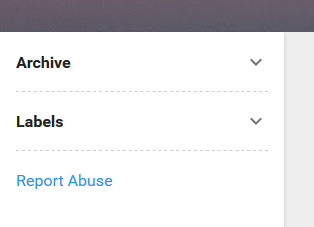The Benefits of Napping and How to Nap Effectively
It's 2 pm and you're at work or school, and suddenly you find yourself feeling sluggish and drowsy. You may be tempted to grab another cup of coffee, but there's a better solution: take a nap!
Napping can help boost your productivity, creativity, and overall well-being.
So what are the benefits of napping and how to nap effectively? Let's explore.
The Benefits of Napping
Improved Cognitive Function
Napping can help improve cognitive function, including memory, learning, and attention span.
A study published in the journal Sleep found that a 30-minute nap improved cognitive function in participants, and that the effects lasted up to four hours after waking up from the nap. Another study published in the Journal of Sleep Research found that napping for just 10 minutes was enough to improve cognitive performance.
Increased Productivity
Napping can also help increase productivity.
Taking a short nap can help you recharge and refocus, so you can tackle your tasks with renewed energy and focus
A study published in the journal Nature Neuroscience found that a 90-minute nap improved the ability to learn and process new information, which can ultimately lead to increased productivity.
Reduced Stress and Anxiety
Napping can also help reduce stress and anxiety.
When you're stressed or anxious, your body produces cortisol, a hormone that can interfere with sleep. Taking a nap can help reduce cortisol levels, which can help you feel more relaxed and less anxious.
A study published in the Journal of Clinical Endocrinology & Metabolism found that taking a nap during the day can help reduce cortisol levels and improve overall well-being.
How to Nap Effectively
Find the Right Time
The best time to take a nap is when you start to feel sleepy or tired. This is usually in the mid-afternoon, between 1 pm and 3 pm. However, everyone is different, so you should experiment to find the best time for you.
Keep It Short
The ideal nap length is between 10 and 30 minutes. This is enough time to help you recharge and refocus without interfering with nighttime sleep. Longer naps can lead to grogginess and interfere with nighttime sleep.
Create the Right Environment
Creating the right environment is key to a successful nap. Find a quiet, dark, and cool place to nap. Use a comfortable pillow and blanket, and consider wearing an eye mask and earplugs to block out any light or noise.
Examples
The Power Nap
The power nap is a short nap of 10 to 20 minutes. This type of nap can help improve cognitive function and increase productivity. The power nap is ideal for people who have limited time, such as students or professionals.
To take a power nap, find a quiet place to nap, set a timer for 10 to 20 minutes, and use an eye mask and earplugs to block out any light or noise. When you wake up, you'll feel refreshed and ready to tackle your tasks.
The Nap-a-Latte
The "nap-a-latte" is a technique where you drink a cup of coffee before taking a short nap. The caffeine in the coffee takes about 20 to 30 minutes to take effect, which is the perfect amount of time for a short nap. When you wake up, you'll feel energized and alert, thanks to the caffeine.
To take a "nap-a-latte", drink a cup of coffee, find a quiet place to nap, set a timer for 20 to 30 minutes, and use an eye mask and earplugs to block out any light or noise. When you wake up, you'll feel refreshed and energized, ready to tackle your tasks with renewed energy.
It's important to note that the "nap-a-latte" technique may not be suitable for everyone. Some people may be more sensitive to caffeine and may find it difficult to fall asleep after drinking coffee.
The Recovery Nap
The recovery nap is a longer nap of 90 minutes or more. This type of nap can help improve memory consolidation and boost creativity. The recovery nap is ideal for people who need to recharge after a long day or a challenging task.
To take a recovery nap, find a quiet place to nap, set a timer for 90 minutes or more, and use an eye mask and earplugs to block out any light or noise. When you wake up, you may feel groggy at first, but this feeling should pass within a few minutes. You'll feel refreshed and rejuvenated, ready to tackle whatever comes your way.
What Have We Learned?
Napping is a simple and effective way to improve cognitive function, increase productivity, and reduce stress and anxiety. By finding the right time, keeping it short, and creating the right environment, you can nap effectively and reap the benefits.
Everyone is different, so it may take some experimentation to find the best nap routine for you. Whether you prefer a power nap, a nap-a-latte, or a recovery nap, taking a nap can help you recharge and refocus, so you can tackle your tasks with renewed energy and focus.
Taking a nap can provide many benefits for your physical and mental health. It's important to find the right time, keep it short, and create the right environment to nap effectively.
Whether you're a student, professional, or just someone looking to recharge, napping can be a great tool to help you achieve your goals and improve your overall well-being.
(The image source is https://www.pexels.com/photo/man-napping-on-books-3564013/ )




Comments
Post a Comment